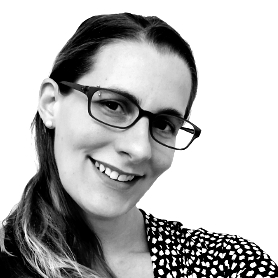Publications and Projects
Towards Deep Learning for Predicting Microbial Fuel Cell Energy OutputOne of the biggest challenges to wider adoption of environmental sensing networks is the lack of ubiquitous power infrastructure. You can’t just plug electronics into the dirt… but what if you could? Our work, “Towards Deep Learning for Predicting Microbial Fuel Cell Energy Output”, which was accepted to ACM COMPASS 2024, progresses this vision by creating a deep learning model that takes in environmental data (like soil moisture, temperature, and electrical conductivity), and outputs a prediction of how much energy the soil battery will produce for a future time horizon.
Soil-Powered Computing
Our work “Soil-Powered Computing: The Engineer’s Guide to Practical Soil Microbial Fuel Cell Design” was published in IMWUT (Proceedings of the ACM on Interactive, Mobile, Wearable and Ubiquitous Technologies).
Bringing Carbon Awareness to Multi-cloud Application Delivery
Our work on carbon-aware load balancing was presented at the second annual ACM HotCarbon workshop, and will appear in the ACM SIGEnergy Energy Informatics Review journal.
The Sky is not the limit: untapped opportunities for Green Computing
Our work on sustainable Information and Communications Technology was presented at the first annual HotCarbon workshop co-located with OSDI, and also published in the ACM SIGEnergy Energy Informatics Review journal.
Hardware to enable large-scale deployment of soil microbial fuel cells
Our work on “Hardware to enable large-scale deployment of soil microbial fuel cells” was presented at the ENSsys 2022 workshop, which is part of the SenSys conference.
Early Characterization of Soil Microbial Fuel Cells
Our work on “Early Characterization of Soil Microbial Fuel Cells” was accepted at IEEE ISCAS 2022.
Low-cost In-ground Soil Moisture Sensing with Radar Backscatter Tags
Our work on low-cost, high accuracy in-situ soil moisture sensing has been accepted for publication at ACM COMPASS 2021. The paper is titled Low-cost In-ground Soil Moisture Sensing with Radar Backscatter Tags. ACM COMPASS aims to be the forum for the presentation and publication of original research from a broad array of disciplines, including computer and information sciences, social sciences, environmental sciences and engineering, that support the growth of sustainable societies worldwide.
Farming Electrons: Galvanic vs. Microbial Energy in Soil Batteries
Our short paper titled Farming Electrons: Galvanic vs. Microbial Energy in Soil Batteries has been accepted to IEEE Sensors Letters.
Time-of-Flight Soil Moisture Estimation Using RF Backscatter Tags
Our short paper titled Time-of-Flight Soil Moisture Estimation Using RF Backscatter Tags has been accepted to IGARSS 2020, the IEEE International Geoscience and Remote Sensing Symposium. It was virtually presented in October 2020.
Soil Moisture Sensing Demo
I’ll be presenting a live demo of our soil moisture sensing work at IPSN ‘20 in Sydney, Australia during April 21-24. Here’s a video for those who can’t make it to Australia:
RF Soil Moisture Sensing via Radar Backscatter Tags
Our paper, “RF Soil Moisture Sensing via Radar Backscatter Tags” is under review and a pre-preint is available on the arXiv.
Wireless Soil Moisture Sensing Won Best Poster Award at SenSys '19 N2Women Workshop
Our poster, “Wireless Soil Moisture Sensing”, won an award for best poster at the SenSys ‘19 N2Women Workshop.
2019: BackCam, Wireless Computer Vision Using Commodity Radios (IPSN)
Our paper has been accepted for publication at IPSN ‘19 (Information Processing in Sensor Networks): BackCam, Wireless Computer Vision Using Commodity Devices by Colleen Josephson, Lei Yang, Pengyu Zhang and Sachin Katti.
2018: Using RF backscatter to sense soil moisture

2017: Freerider, Backscatter Communication Using Commodity Radios (CoNEXT)
At the CoNEXT 2017 conference in Seoul, South Korea, we introduced the design and implementation of FreeRider, the first system to enable backscatter communication with multiple commodity radios, such as 802.11g/n WiFi, ZigBee, and Bluetooth, while these radios are simultaneously used for productive data communication. Furthermore, we are, to our knowledge, the first to implement and evaluate a multi-tag system.
2016: Field Recordings from Around the Globe

2014: Network Coded Anonymous Gossip (MEng Thesis)
MIT’s EECS department has a Masters of Engineering (MEng) program where qualifying undergraduates can apply to stay for an additional year and complete a master’s degree. The program requires both coursework and a research thesis. My research advisor was Professor Muriel Medard, and my topic was on using network coding for anonymous network communications.
2013: WiFi bitrate selection algorithm verification term paper
This was my term project for 6.829, MIT’s graduate computer networking class. We compared the performance of two wireless bit-rate selection algorithms and made improvements to one of them. Bit-rate selection is the process of choosing which bit rate to send with over the wireless link. Unlike wired networks, it is very common for wireless networks to send at lower rate that the maximum the channel supports. This is because wireless channel conditions are rarely ideal due to factors such as fading and interference. The goal is to select a bit rate that achieves the highest throughput, and to keep that rate updated as channel conditions change.
